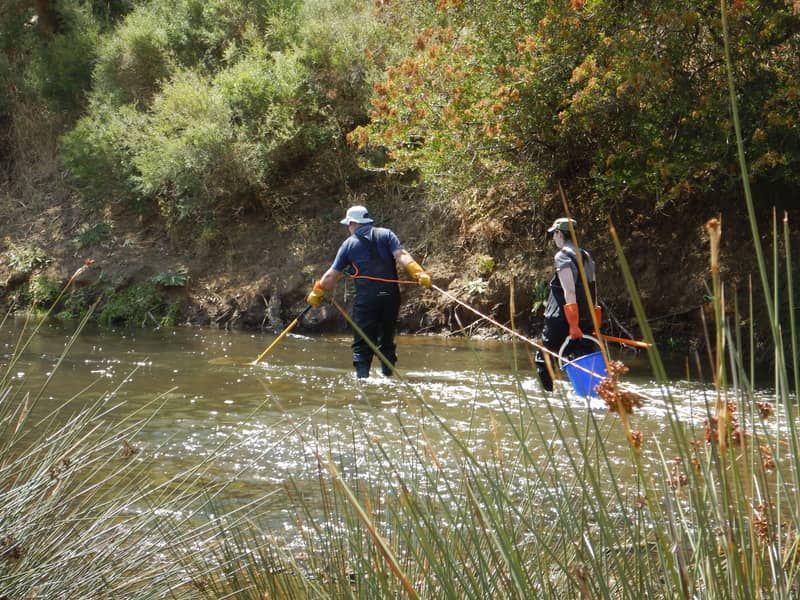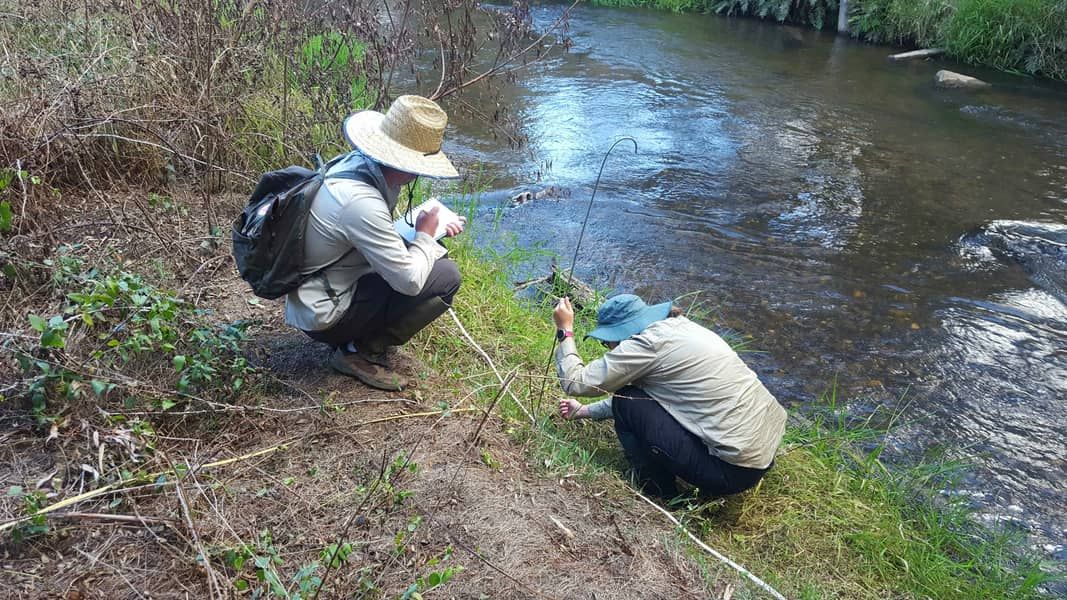Monitoring results are in - showing that not only is water for the environment working, but that having the right data helps us get better results from this limited resource, leading to more efficient and effective use of environmental flows in Victoria.
The Victorian Environmental Flows Monitoring and Assessment Program (VEFMAP) and the Wetland Monitoring and Assessment Program for environmental water (WetMAP) help us better understand how our waterway ecosystems respond to the release of water for the environment so we can manage water for the environment more effectively.
VEFMAP focuses on the response of native fish and vegetation to environmental flows in Victorian rivers, while WetMAP explores our wetland environments providing guidance and insights on water for the environment deliveries and regimes for vegetation, birds, fish and frogs.
This work is coordinated by DELWP Water and Catchments and scientists from the Arthur Rylah Institute for Environmental Research (ARI), in collaboration with catchment management authorities (CMAs), Melbourne Water (MW), the Victorian Environmental Water Holder (VEWH) and independent scientists.
Really getting to know our rivers
174 fish sites have been monitored across 12 rivers
Objective: examine the effects of environmental flows on the distribution, dispersal, recruitment, abundance and population trends of key native fish species.
KEY FINDINGS:
Annual fish monitoring has been a key element of VEFMAP since 2005. Analysis of these data from Victorian rivers, combined with flow-event based monitoring since 2016, has helped identify how different flow and nonflow related factors have affected native fish populations.
Long-term trends identified include:
- A decline in the abundance of most fish species during the Millennium Drought, with fish abundance improving since 2012. Species that showed this trend were Murray cod, golden perch, Murray-Darling rainbowfish and trout cod. Trends varied across systems and species. For example, abundances of most species increased substantially in the Campaspe River, while the lower Loddon River saw very little change.
- Improved flow conditions, due to both natural flows and environmental water, have contributed to these improvements in fish abundance, with elevated flows during spring providing the most benefit.

Fish surveys, by ARI
51 vegetation sites have been monitored across nine rivers
Objective: examine effects of environmental flows on the distribution, foliage cover, diversity, recruitment and growth of riverbank plant species.
KEY FINDINGS:
Monitoring of riverbank vegetation showed baseflows provided by environmental water deliveries are critical to sustain fringing and emergent vegetation.
Spring freshes expand species distributions higher up the bank and sustain healthy plant populations. They increase riparian plant cover, seed dispersal, and germination, and provide water that young or shallowrooted plants need.
Monitoring showed:
- The timing and height of flows significantly influences how much germination occurs and the variety of species that germinate. Spring flows increase germination of native riparian species. Low flows in late summer are also important to promote aquatic and emergent plants.
- Rainfall supports germination of many riparian plants. With future hotter and drier conditions predicted, the role of environmental flows in maintaining riparian vegetation populations will become increasingly important.
Many seeds that germinated in autumn are tolerant of long periods of cooler season flooding. However, many seedlings are killed by very high or long duration flows or during summer/early autumn flows. These results reflect what our nursery experiments found.

Vegetation surveys, by ARI
What about our wetland sites?
Sixty-six wetlands were monitored covering the four themes for vegetation, birds, fish and frogs. Results are still being synthesised, but early findings demonstrate some key outcomes of water for the environment.
INITIAL FINDINGS:
Twenty-two sites were monitored for vegetation
- Environmental watering plays a key role in supporting the growth of wetland plant species and suppressing the growth of terrestrial plant species – in much the same way that natural wetting and drying cycles would.
Thirty sites were monitored for frogs
- Frogs were recorded in higher numbers and great species diversity at sites that received water for the environment.
Twenty-five sites were monitored for birds
- Waterbirds responded quickly and strongly to water for the environment deliveries to wetland sites, turning up shortly after deliveries commenced and leaving once sites became dry.
Fifteen sites were monitored for fish
- Environmental watering of wetlands increased connectivity, productivity and water quality helping to improve feeding and breeding opportunities for native fish species.